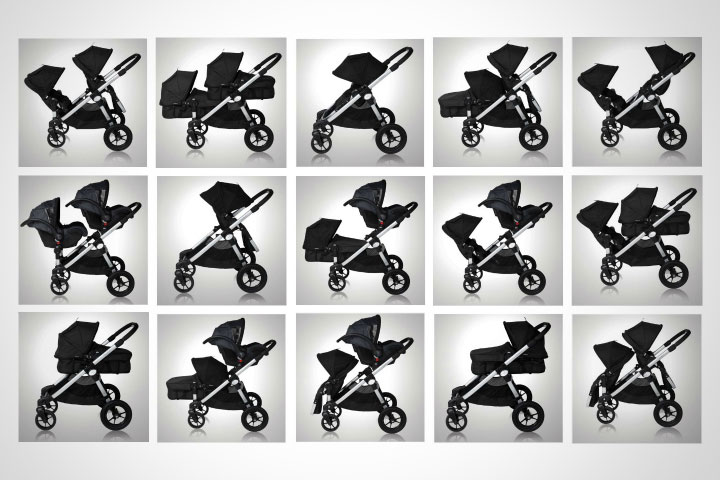There is no single best car seat for every child or vehicle. It can be very confusing to decide what type of carseat to buy, or which features are important. Our Carseat Buying Guide can help you learn about many features and has links to other websites with specific recommendations. Specific recommendations are a great starting point, but these vary greatly because someone else's personal preferences may differ from yours, as will the fit with their particular children and vehicles. One of the most important things is to determine which type of carseat you need, and be prepared to do some comparative shopping. Don't be discouraged if you have to try more than one to get a model that works for you and your child!
Nearly all new vehicles and carseats are equipped with Lower Anchors and Tethers for CHildren (LATCH). This is a relatively new system that may be used instead of seatbelts for carseat installation. Some boosters boosters, including the Clek Ollie and the Clek Olli, along with the discontinued Baby Trend LATCH LOC and the discontinued Britax BabySafe, have rigid LATCH attachments. In most vehicles, rigid LATCH is extremely fast, easy and may offer additional protection, especially in dangerous side impacts. The tables below list other features to consider, as well as safety tips. Some example models are shown as illustrations; they are not necessarily recommended as the best models for your child or vehicle!
Infant Carseats and Carriers:
- Use rear-facing up to 22-35 pounds, depending on the model.
- A 5-point harness is preferred, keep chest clip at armpit level and not on the neck or tummy.
- Harness strap slots should be at or below the shoulders
- A front adjuster to tighten the harness makes it easy to use.
- Newborns and infants should have a 45 degree maximum recline.
- Built-in angle indicators and adjusters may help get the correct recline.
- Manufacturers have differing instructions on where handle should be while traveling. Read the instruction manual to learn if it should be up or down in the vehicle.
- A rear-facing tether or impact foam found on some models may improve safety.
- Infant seats may fit newborns better than convertible models.
- Some models include a complete stroller and base system, while others may include just the convenient base that installs in the car.
Convertible Carseats:
- Rear-Facing is SAFEST!
- Select a model with a 35 or 40 pound rear-facing weight limit and keep your child rear-facing as long as possible.
- Your child should be turned front-facing at the 35 or 40 pound rear-facing limit, or if the top of their head is within an inch of the top of the shell.
- Models with a 5-point harness and front harness adjuster are preferred.
- Keep the harness straps at or below the shoulders while rear-facing.
- Keep the harness straps at or above the shoulders while front-facing.
- Some older models require the use of TOP slots while front-facing (Check your manual).
- Keep chest clip at armpit level, not on the neck or tummy
- Make sure you use the correct seat belt path or LATCH hooks intended for front-facing or rear-facing.
- A 45 degree maximum recline is needed for newborns and young infants while rear-facing. Older babies with good head support can have less recline while rear-facing.
- Upright with no recline is best for front-facing
- Some models feature tethers that can also be used rear-facing and impact foam for added safety. Some also have built-in locking clips for convenience.
Combination Carseats:
- Use the internal harness front-facing to the maximum limits indicated in the manual!
- Models with a 5-point harness and front harness adjuster are preferred.
- Keep chest clip at armpit level, not on the neck or tummy.
- When the child reaches the weight limit of the harness or his or her shoulders are above the top harness slots, remove the harness and use the seat as a booster with a lap AND shoulder belt.
- As a booster, the lap belt should ride high on the thighs or low on the hips.
- As a booster, the shoulder belt should cross the center of the shoulder and chest.
- Use the built-in shoulder belt guide if the shoulder belt doesn't fit correctly.
- The shoulder belt guide on some models can "catch" the seatbelt and leave slack. Please make sure the belt is tight at all times.
- Look for high, top harness slots to accommodate taller children up to 40 pounds (more for many models) in the harness.
Booster Carseats:
- Best used after 40 pounds with a lap AND shoulder belt.
- Use until the manufacturer's weight limit, or until your child can wear a seatbelt properly, usually around 8 years old or 4' 9" tall.
- The shoulder belt should cross the center of the shoulder and chest, not on the neck.
- Lap belt should be high on the thighs or low on the hips, not on the tummy.
- Use a high back model if your vehicle has low seat backs with no head rests. Some models may offer increased side impact protection.
- A backless model is fine if your vehicle has headrests, or if there is plenty of growing room from the tops of your child's ears up to the top of the seat back.
- Many models have open loop shoulder belt guides that don't catch like some guides on combination seats.
- Many have adjustable head supports and extra padding for added comfort, compared to combination seats.

